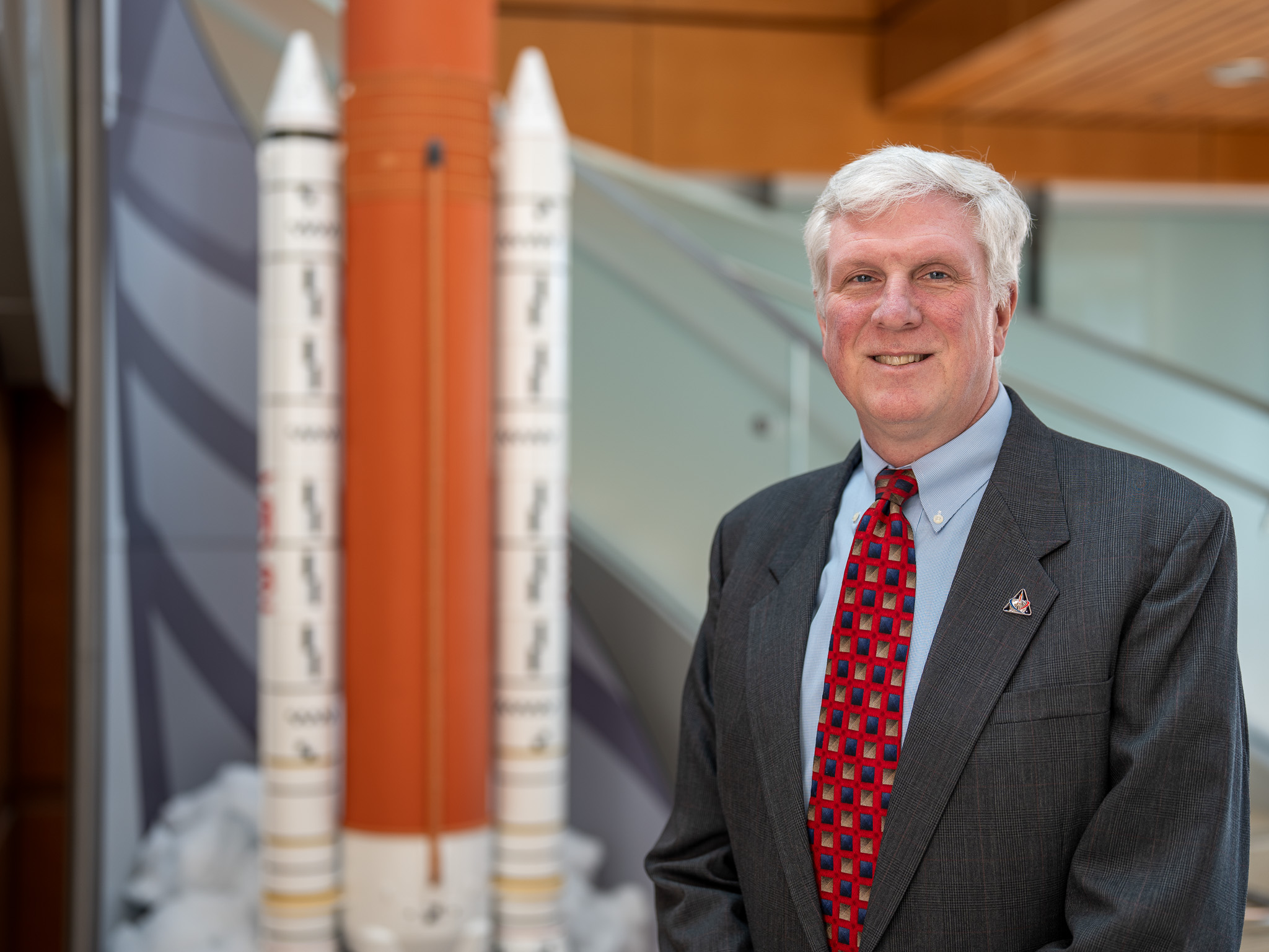Matthew Ramsey is keenly aware of the responsibility he shoulders to ensure the agency’s missions to the Moon are safe and successful. As the mission manager for Artemis II, NASA’s first crewed mission under Artemis, Ramsey is charged with helping to define the requirements and priorities for the missions and certifying that the hardware and operations needed to support flight are ready.
“For me, it’s all about the crew and ensuring their safety as they venture to the Moon and come home,” said Ramsey. “Sending people thousands of miles from home and doing it in a way that sets the stage for long-term exploration and scientific discovery is an incredibly complex task.”
During the leadup to Artemis II, Ramsey is responsible for oversight of the daily preparations as NASA prepares to launch and fly the agency’s SLS (Space Launch System) rocket with a crew of four inside the Orion spacecraft. He will adjudicate issues that arise in the weeks and months ahead of the flight test and serve as deputy of the Mission Management Team — a tiger team that forms two days before launch to accept the risks associated with the mission and make decisions during the flight to address any changes or concerns.
A native of Hernando, Mississippi, Ramsey pitched for the Mississippi State University baseball team before earning bachelor’s and master’s degrees in aerospace engineering from the school.
“There are a lot of similarities between mission management and pitching,” he said. “You control many aspects of the tempo, and there’s a lot of weight on your shoulders.”
Ramsey began his career in the intelligence and defense sectors before joining the space agency in 2002 to work on guidance, navigation, and control for the X-37 Approach and Landing Test Vehicle. Later, he worked on the design of the Ares I and V rockets as part of NASA’s Constellation Program before transitioning in 2010 to the SLS Program in support of the chief engineer at the agency’s Marshall Space Flight Center in Huntsville, Alabama.
During the Artemis I launch, Ramsey was the SLS Engineering Support Center manager at Marshall, coordinating across engineering teams to provide data and solutions to issues encountered during the multiple launch attempts. He then supported the Mission Management Team during Artemis I in an observational role, preparing for his position as Artemis II mission manager.
While NASA and its partners are preparing for Artemis II, work toward other Artemis missions is also underway. Ramsey also will serve as the mission manager for Artemis IV, the first Gateway assembly mission that also will include a lunar landing.
“With Artemis II on the horizon, most of my time is focused on making sure we’re ready to fly Reid, Victor, Christina, and Jeremy around the Moon and bring them safely home,” Ramsey said. “For Artemis IV, we’re in the mission concept-planning phase, establishing mission priorities and objectives and defining how we’ll transfer crew between all the hardware elements involved.”
As Artemis II nears, Ramsey is blending his operational experience and expertise in design, development, testing, and evaluation so that NASA is primed for what lies ahead: sending humans back to the Moon for the first time in more than 50 years and laying the foundation for future missions that will ultimately enable human exploration of Mars.
























